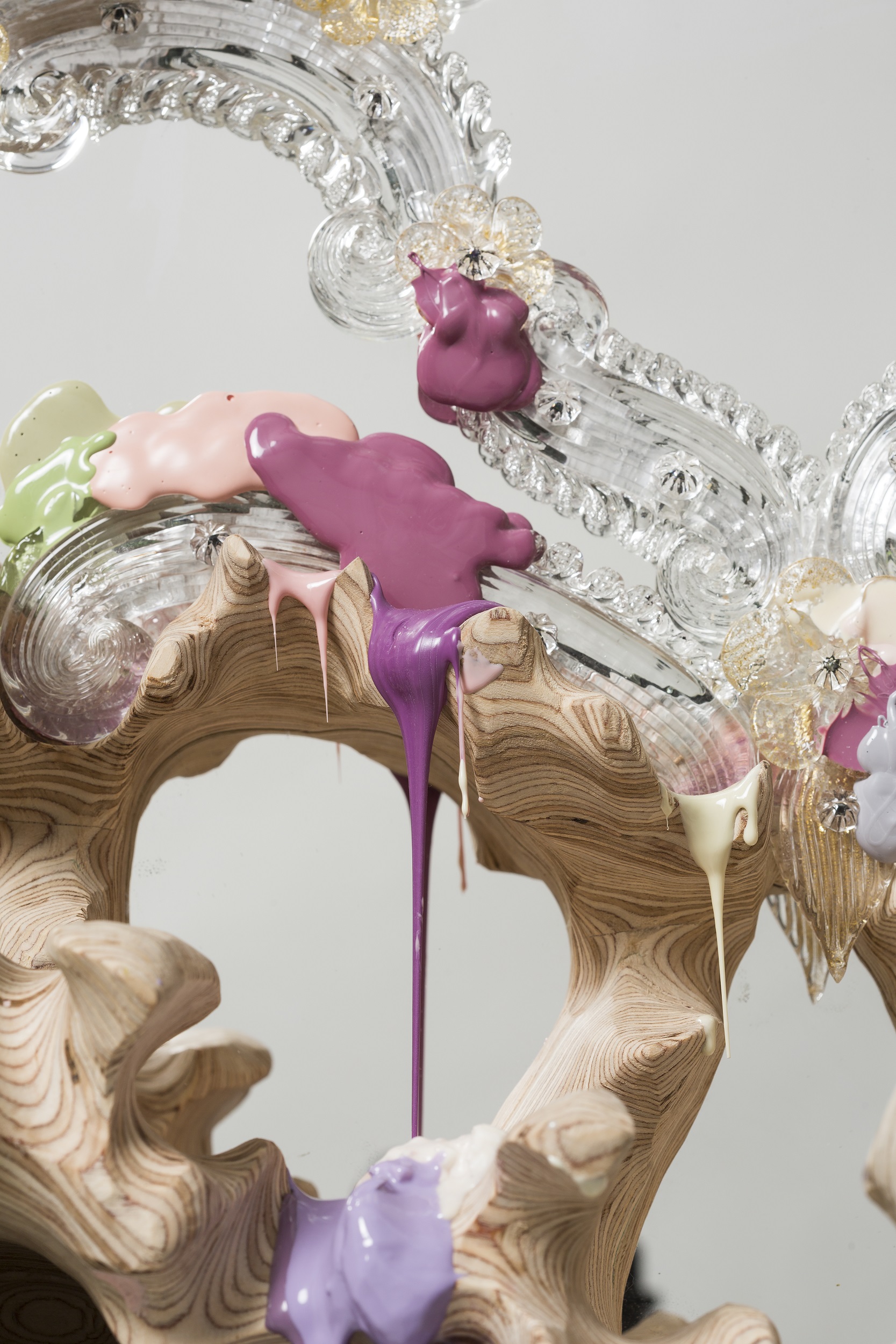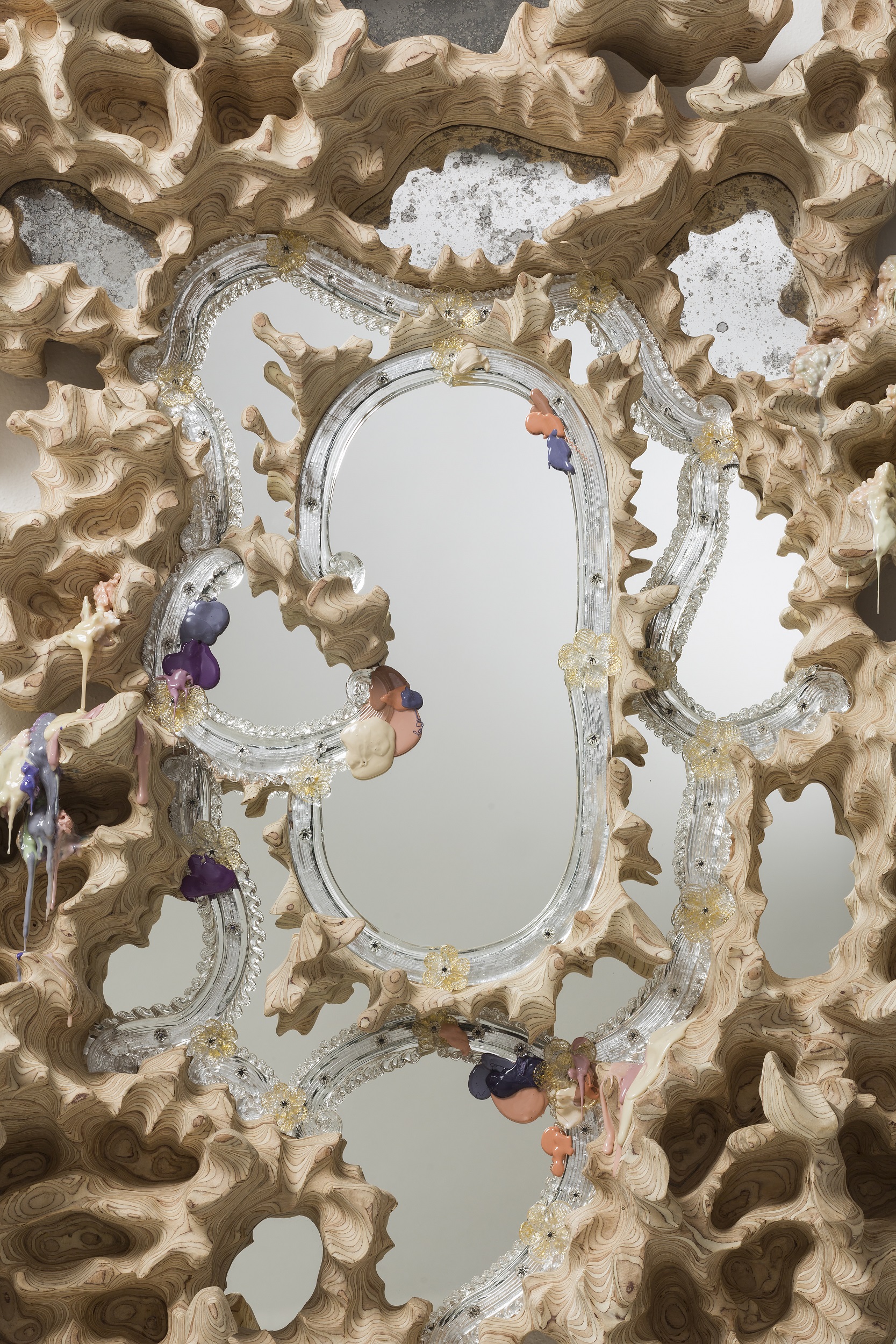The first VDB Residency started in November 2020. Tadeas Podracky, the winner of the 2021 edition, exhibited the outcome of his collaboration with the Venetian studio Ongaro e Fuga Artistic Mirrors in the collective exhibition Design As Self-Portrait.
The first VDB Residency was supported by Milano Czech Centre.

Tadeas writes: "Born out from an exploration into the Venetian mirror-making tradition, “Fading Reflection” is two mirror objects that seek to disrupt our perception of what tradition represents. The object reflects upon the idealization of traditional crafts, and imagine a scenario where the tradition is a never-ending constant evolution; artifacts become the container of continual flux, materializing the transition between its history, surroundings, and human.
Details Ph. Tomas Brabec
During residency, where I have been researching traditional Venetian materials and crafts, Venetian mirrors caught my attention as one of the most important historical icons of the glassmaking tradition. Historically, the production knowledge of the Venetian mirror was firmly tied to the place of origin - the island of Murano, and it has been kept as a secret. However, the object's relevance is mainly historical; the traditional craftsmanship is preserved, and production continues even nowadays. To properly know the Venetian mirror even from the inside, I spent a month in Venice exploring the local production, knowing processes, and learning them.


Tadeas experimenting with glass and mirroring techniques inside Ongaro e Fuga's workshop in Murano.
Below, selecting the handmade glass elements with Giuliano Fuga.
The Venetian mirror is essentially an ingenious system of hand-made glass decorative components and mirrors that functionally interlock each other with the wooden supporting frame. All processing crafts are subordinated to the decorative and reflective function of the object. In the research phase, I was fascinated by the side products of the traditional craftsmanship, the materials hidden behind the mirrors, those considered unwanted or low - such as a wooden frame that is often just roughly treated or reluctance to use glue. I realized that these interruptions bear the same testimony of the authentic tradition as the shiny, well-crafted reflection of the mirror and should have been treated the same way with the same high craft skills. Because of that, I wanted to develop a principle on how to undermine the traditional approach and equalize "low" materials, interrupt the privileged position of the glass, and emphasize the gestural quality of the maker ́s craft. I did not want to materialize my ideas with the help of mirror-making techniques but rather to grasp and learn from them, give every material its maximal scope, and let the object decide its character and shape with the help of the intuitive or experimental making process.



The object is formed around its center, which is inlaid with the traditional Venetian mirror - referencing historical pieces. The further from the center, the more the traditional concept of the mirror dissolves, and other materials appear. I questioned how to disrupt the visual materiality of glass and how to connect it with other elements. By experimenting with the silver oxidation, the traditional antique mirror helped me interrupt the surface of the glass, add the colors and merge it with a hand-carved wooden frame. The glue has its own importance in the piece; traditionally, it is not allowed to use glue in mirror making. I wanted to reverse that, use glue as a decorative element that would also mediate the continual interchange between surfaces of the object and surroundings. By that, the mirror offers a transition to the immediate space.
One could argue that it's undermining tradition, but I believe that once the tradition is not questioned or interrupted, it fades away."
--
From VDB Residency to Design Miami: Fading Reflections mirrors participated in Design Miami in December 2021 as part of Podracky's solo booth presented by Side Gallery. Read our article on The Platform.




